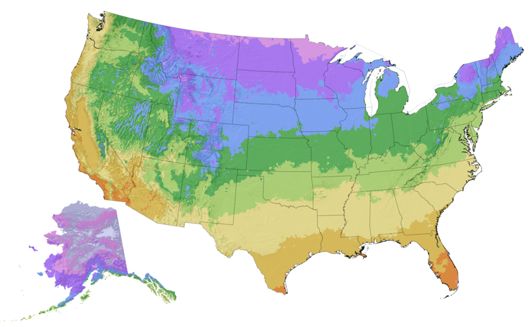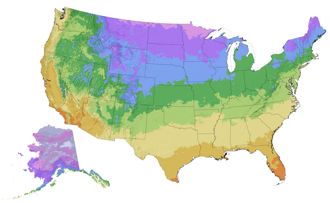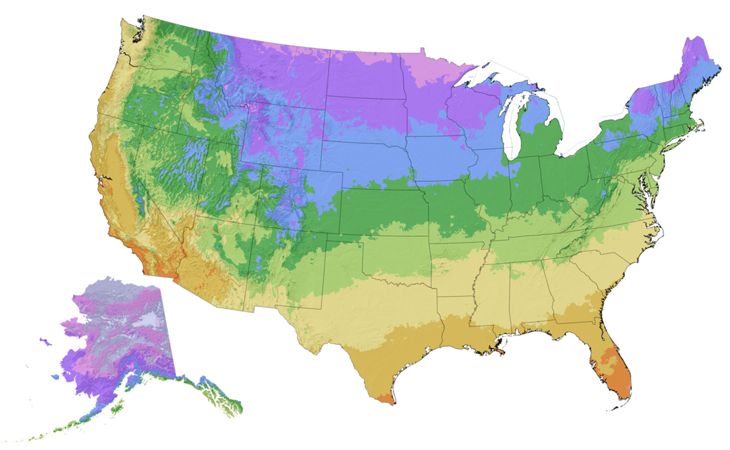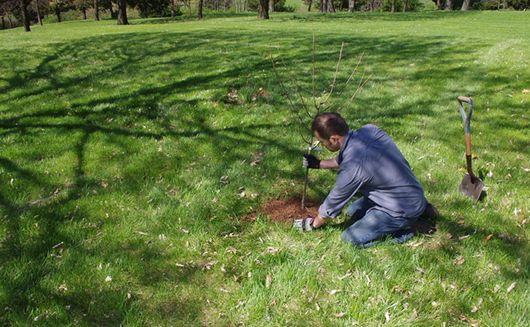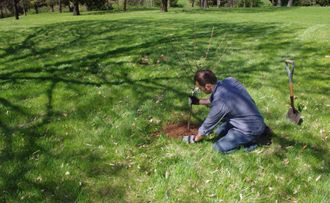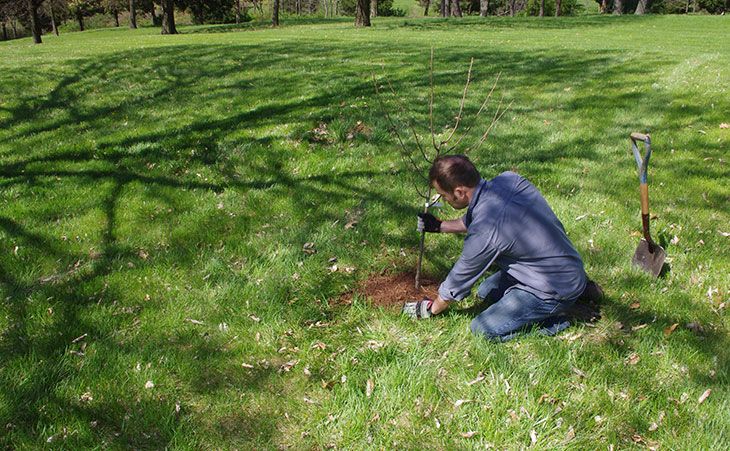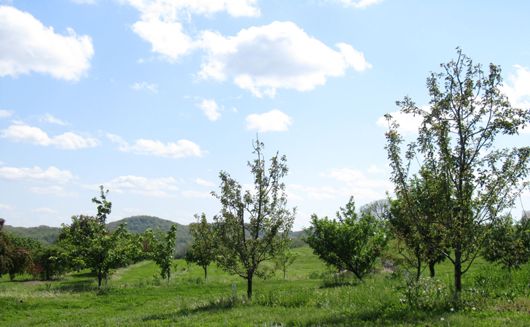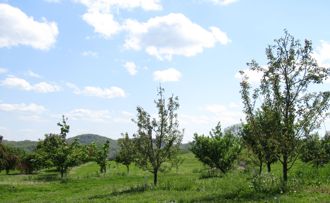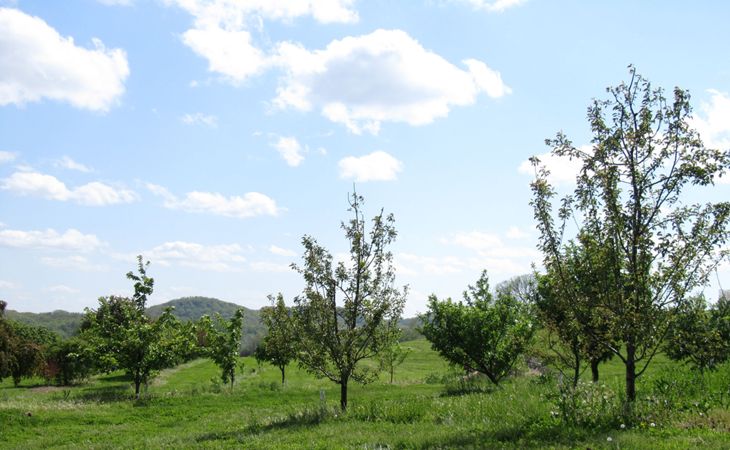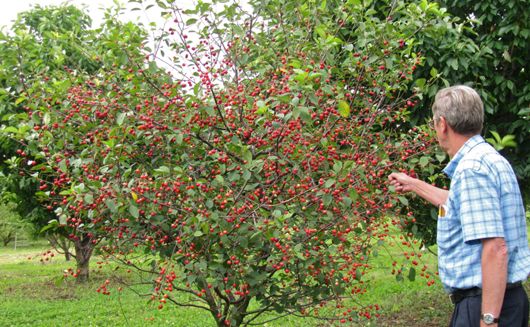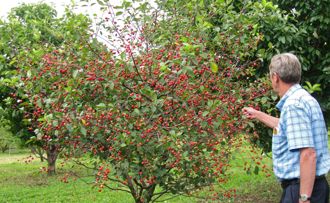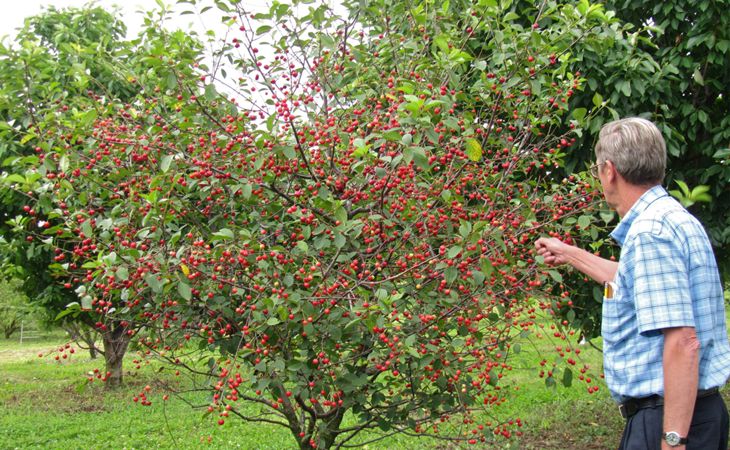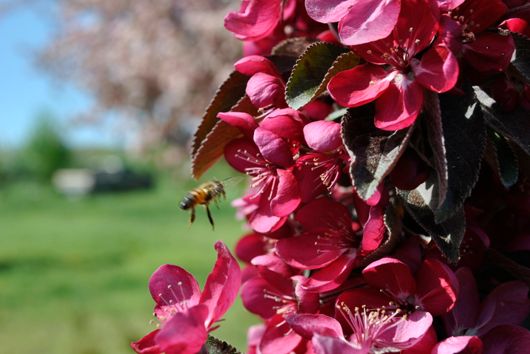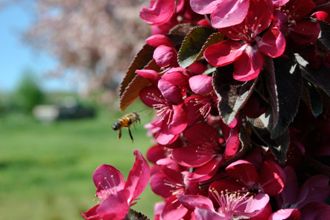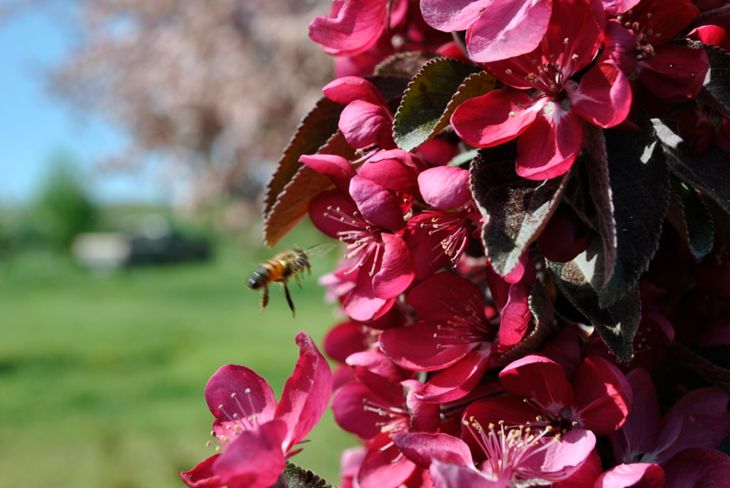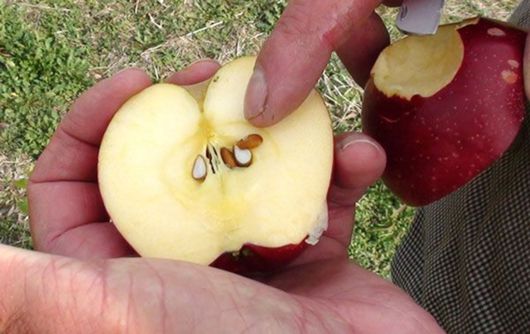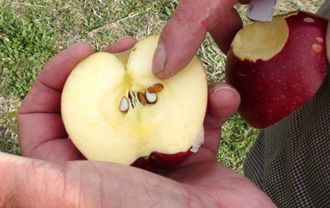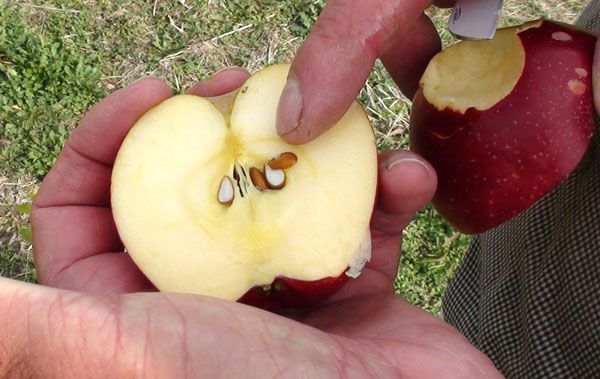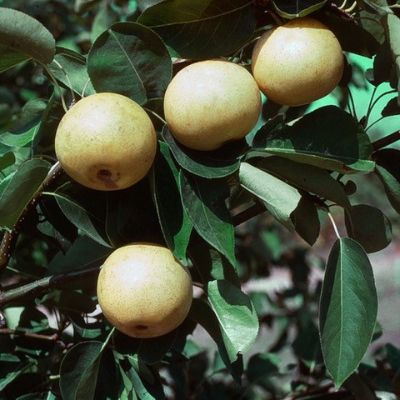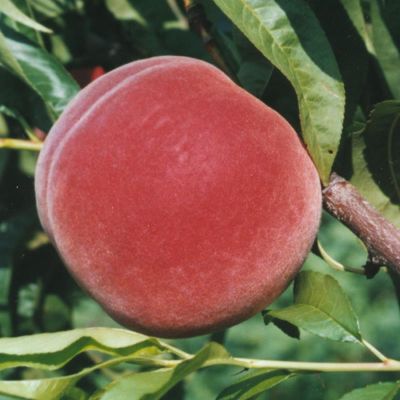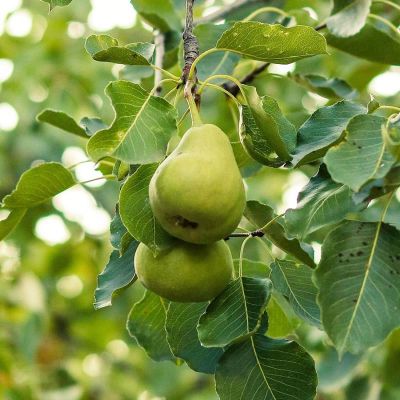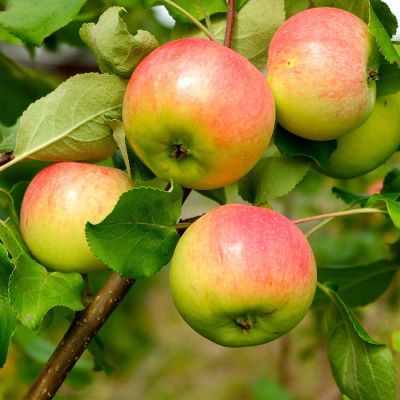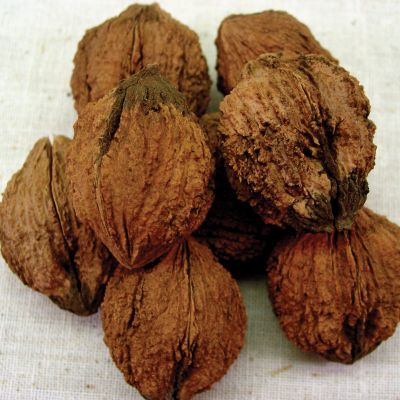Harvest the Goodness from Your Own Backyard
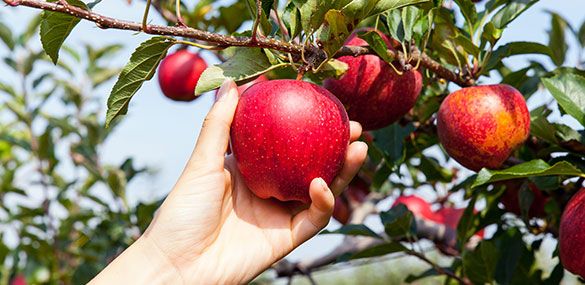
Experience the delight of growing your own fruit and nut trees.
Imagine stepping into your backyard to pick fresh apples, juicy peaches, or wholesome nuts. Growing your own fruit and nut trees is a rewarding experience that brings both beauty and bounty to your home. We're here to make the journey simple and enjoyable.
← Back to Gardening Options | ← Back to Tree Options
Table of Contents:
Climate and Hardiness Zones
Space Considerations
Pollination Basics
Tree Care Essentials
Grafting and Rootstocks (Optional for those interested)
Climate and Hardiness Zones
Understanding your USDA Hardiness Zone is essential for choosing fruit and nut trees that will thrive in your backyard. The United States Department of Agriculture (USDA) created a map dividing the country into different climate zones based on average minimum winter temperatures. This map helps gardeners identify which plants are most likely to survive and flourish in their specific region.
Every tree and plant thrives within a certain range of hardiness zones. While some might think it's important to purchase a tree grown locally, the key is actually to select one that is hardy for your zone. All of our trees and plants are labeled with minimum and maximum hardiness zones, making it easy for you to find the perfect match. By providing your ZIP code, we'll highlight the trees best suited for your area.
It's also good to note that while some plants, like citrus trees, are only hardy in warmer southern zones, you can still enjoy them in colder regions. Planting these trees in pots and bringing them indoors during the winter allows you to cultivate a wider variety of plants regardless of your local climate.
When is the best time to plant?
The best time to plant depends on the type of plant and your local conditions. For annual seeds and vegetables, planting dates are specific to the season. However, perennial plants like fruit trees and berry bushes are more flexible. Instead of focusing on a fixed date, aim for a range of favorable conditions.
Space Considerations
Space is crucial when choosing which trees to plant. A single fruit or nut variety can come in different mature sizes—dwarf, semi-dwarf, and standard—determined by the rootstock it's grafted onto. Rest assured, the fruit remains the same delicious variety.
- Dwarf Trees
Perfect for smaller yards or container gardening, these trees reach about 8 to 10 feet tall. Their compact size makes them easy to manage and harvest. - Semi-Dwarf Trees
Growing to approximately 12 to 15 feet, semi-dwarf trees are ideal for average-sized backyards, offering a balance between space and fruit yield. - Standard Trees
These can grow over 18 feet tall and are suited for larger spaces, providing abundant harvests but requiring more room to thrive.
Dwarf

Matures to be about 8-10' tall and wide. Provides an abundance of full-size fruit in a minimal amount of space.
Semi-Dwarf

Matures to be about 12-15' tall and wide. Gives maximum fruit yield per square foot. Most of the fruit can be harvested while standing on the ground.
Standard & Unmarked

Matures to be at least 18' tall and wide. (Standard peach and nectarine trees mature to be 12-15' tall and wide.) A multi-purpose fruit and shade tree.
Each product page displays the estimated mature height and recommended plant spacing, helping you select the right tree size for your space. Understanding these requirements ensures your trees grow strong and healthy without overcrowding.
Learn More About Fruit Tree Sizes
Pollination Basics
Pollination is essential for fruit production, but it can be a bit confusing for new gardeners. Some trees are self-pollinating (self-fruitful), meaning they can produce fruit on their own. However, many fruit and nut trees require a companion tree—a process known as cross-pollination—to bear fruit abundantly. Key Points to Understand:
- Different Varieties Within the Same Type:
For cross-pollination, the second tree must be a different variety within the same type of fruit. For example, a 'Gala' apple tree can pollinate a 'Fuji' apple tree, but not a pear tree. - Similar Bloom Times:
The bloom times of the two trees need to overlap so that pollination can occur. Our site categorizes bloom times into early, mid, and late seasons.- Early and Mid Blooms Overlap: Trees labeled as early and mid-season bloomers can pollinate each other.
- Mid and Late Blooms Overlap: Mid-season bloomers can also pollinate late-season bloomers.
- Early and Late Blooms Do Not Overlap: Early and late bloomers generally won't be in bloom at the same time, so they cannot pollinate each other.
- Choosing Pollination Partners:
While our product pages suggest optimal pollination partners, any tree of the same type with overlapping bloom times will generally work. Trees planted within 100 feet of each other are close enough for effective pollination by bees and other pollinators. This gives you flexibility in selecting varieties you prefer.
Pollination: How We Help
- Product Page Information:
Each of our product pages indicates whether a tree is self-pollinating or requires a pollination partner. We also list suggested pollinators and specify their bloom times. - Bloom Time Indicators:
Our site clearly shows the bloom times for each variety, helping you match compatible trees easily.
With our guidance, you'll learn how to maximize your harvest by ensuring your trees are properly pollinated. Understanding these pollination basics will set you on the path to a fruitful garden.
Tree Care Essentials
Once your trees are planted, proper care is key to their health and productivity. From watering and fertilizing to pruning and pest management, understanding the specific needs of your fruit or nut trees will help them thrive throughout the seasons.
We offer dedicated how-to guides for each category—apples, pears, peaches, and more. These guides provide detailed, step-by-step instructions tailored to each type of tree, covering everything from planting tips to seasonal care routines.
- Planting Guidance: Learn the best practices for planting your trees to give them a strong start.
- Watering and Fertilizing: Discover how to properly nourish your trees for optimal growth and fruit production.
- Pruning Techniques: Understand when and how to prune to promote healthy structure and increased yields.
- Pest and Disease Management: Get tips on identifying and managing common issues to keep your trees healthy.
Visit our Growing Guide to access these comprehensive resources and ensure your trees receive the care they need.
Learn Essential Tree Care Tips ›
Grafting and Rootstocks
For those curious about the science behind fruit and nut trees, grafting and rootstocks offer fascinating insights. Grafting allows you to combine the best qualities of different trees, while rootstocks can influence a tree's size, disease resistance, and adaptability to soil types.


